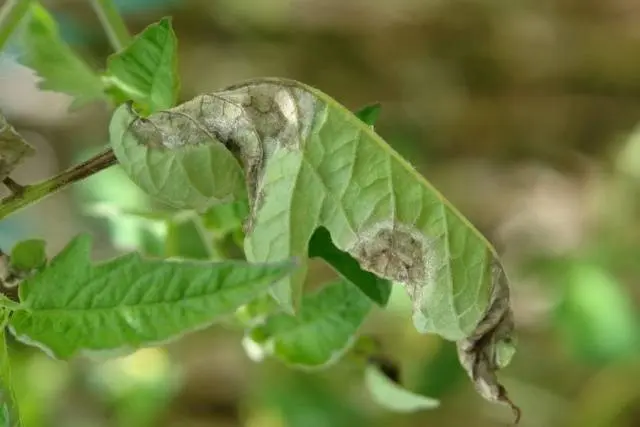Contents
Tomato seeds were brought to Europe a long time ago, but at first these fruits were considered poisonous, then they could not find a way to grow subtropical tomatoes in a temperate climate. Today there are many varieties of tomatoes that perfectly tolerate changeable weather, low temperatures and other vagaries of nature. But, nevertheless, the highest yields can only be obtained as a result of greenhouse cultivation: here a person controls the microclimate, and tomatoes feel comfortable.
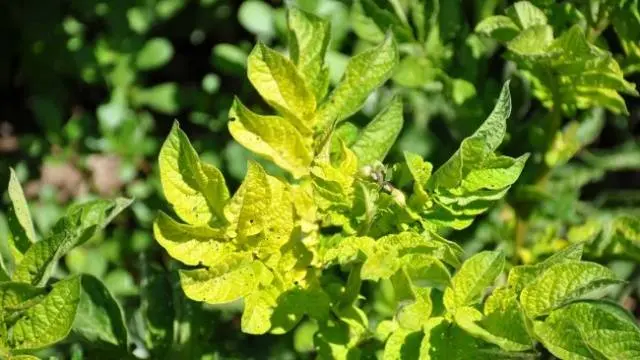
But even in such conditions, problems can lie in wait for the gardener, and one of the most common is the yellowing of the leaves of greenhouse tomatoes.. Why do tomato leaves turn yellow in a greenhouse, and what to do in such cases – let’s try to figure it out.
Why do tomato leaves turn yellow in a greenhouse?
Tomatoes in a greenhouse are undoubtedly more protected from external influences; here they are not afraid of night frosts, heavy rains or unbearable heat.. The task of the gardener is to maintain an optimal microclimate inside his greenhouse.
Tomatoes love this “weather”:
- air temperature within 23-30 degrees;
- constant humidity at the level of 60-70%;
- regular watering;
- enough sunshine, but not the scorching midday heat.
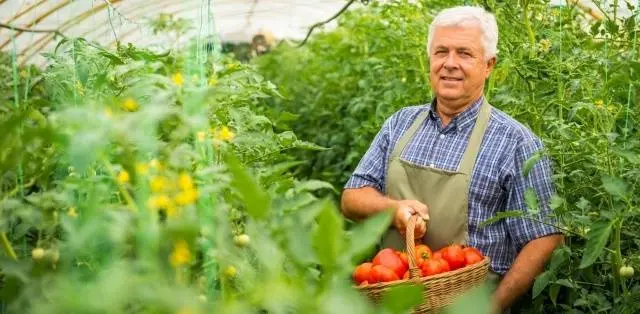
In order for tomato seedlings to feel comfortable in greenhouse conditions, they need to provide all of the above conditions. And besides, constantly monitor the condition of plants and identify problems in the early stages.
Yellowness on the foliage of tomatoes may appear due to a number of reasons, such as:
- Violation of the temperature and humidity conditions in the greenhouse.
- Improper watering.
- Damage to the root system.
- Violation of the balance of microelements in the soil.
- Viral or fungal infections.
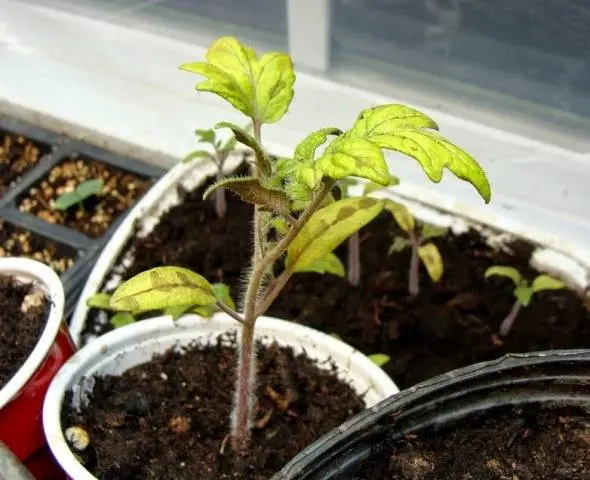
In each of these cases, the leaves of tomatoes turn yellow, but this manifests itself in different ways. The methods of “treatment” also differ.
Violation of the microclimate inside the greenhouse
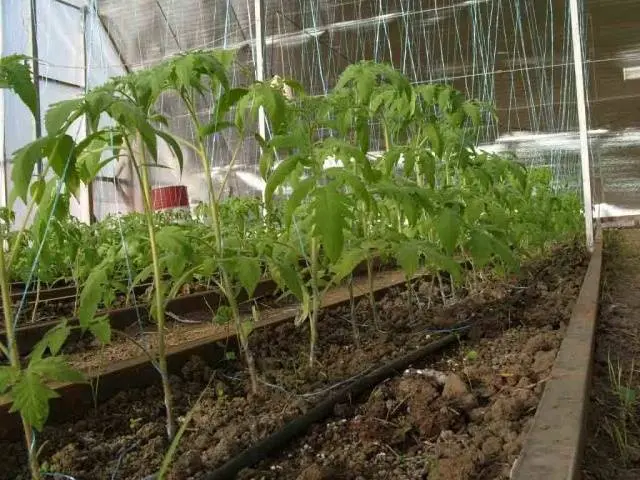
When equipping a greenhouse on your site, the gardener must remember some rules:
- It is better to build a greenhouse not in a place open on all sides, but to choose a site that will be shaded by trees or outbuildings at lunchtime. If the sun constantly shines on a greenhouse with tomatoes, it will not be possible to keep the temperature inside it at around 30 degrees – the thermometer readings can exceed 45 degrees Celsius. In such conditions, the tomatoes will turn yellow, dry out, shed their ovaries and flowers.
- The soil in the greenhouse must be changed regularly, it is better to do this before the start of each season. It is in the soil that the larvae of insect pests lurk; pathogens of infections or fungal spores can be found for several years. If you can’t change all the land from the greenhouse, you can disinfect it a couple of days before planting seedlings, pouring boiling water or a solution of potassium permanganate.
- Every spring, the greenhouse must be disinfected, this applies to walls and wooden pallets. It is also necessary to treat garden tools with antiseptics.
- For planting, you should choose only tomato seeds collected from healthy plants. In any case, it is better to hold the seeds before planting in a weak solution of potassium permanganate.
- To reduce humidity, it is necessary to open the windows and doors of the greenhouse – due to ventilation, excess moisture will quickly evaporate from the walls of the greenhouse and from the ground.
- If there is not enough moisture in the greenhouse, and the air is too dry, tomato leaves may also begin to turn yellow. In this case, you can place small open containers of water inside or use a humidifier.
- The temperature in the greenhouse, anyway, is highly dependent on the climate outside. You can fully control the readings of the thermometer only in a heated greenhouse. In other cases, it is necessary to regulate the microclimate by means of ventilation, opening doors, and humidifying the air.
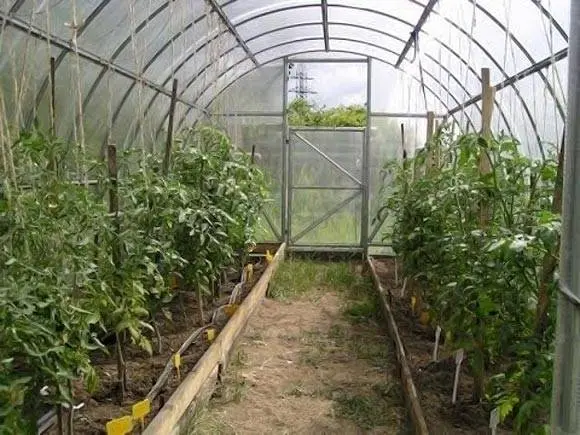
Tomato root damage
The root system of tomatoes is well developed, the central root of tomatoes can go underground to a depth of 150 cm, so many varieties tolerate drought and irregular watering very well. But most lateral roots, however, are only 15-20 cm from the ground, so tomatoes need regular watering.
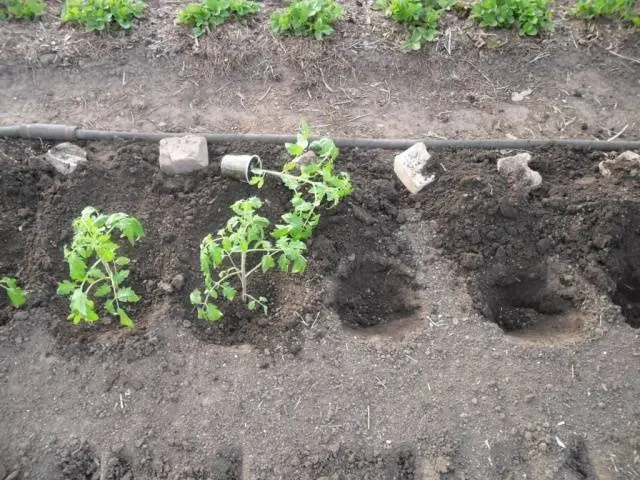
The healthy appearance of tomatoes directly depends on the integrity and condition of the root system, because the roots are an organ that supplies plants with water and nutrients. If the leaves of tomatoes turn yellow and dry out, this may indicate problems with the root system.
Tomato roots can be damaged in several cases:
- due to growing seedlings in too tight cups or boxes. In this case, the roots of the tomato are twisted into a tight ball, it is very difficult to straighten and untangle them, so the roots are severely damaged when transplanted into a greenhouse. As a result, the adaptation of tomatoes in a new place worsens, their leaves begin to dry and turn yellow.
- The same effect can be obtained if the tomato seedlings are overexposed in the house – the root system will become too developed, it will be difficult for the plants to adapt to the new place, it will begin to turn yellow and lose foliage.
- Insect pests can also spoil the roots. The most dangerous for a tomato are the bear and the wireworm. If the gardener noticed yellowing of tomato seedlings after transplanting into the greenhouse, you need to treat the land with suitable insecticides.
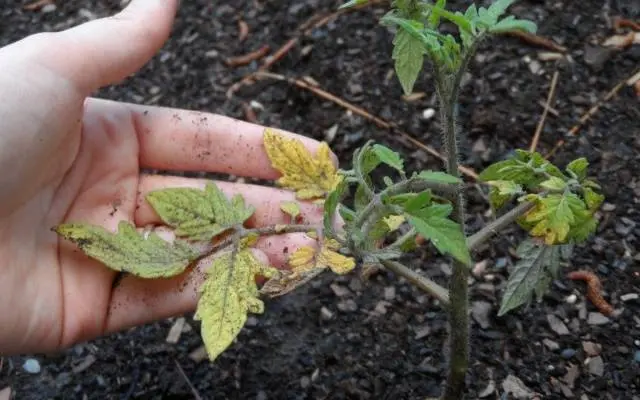
Watering Schedule
The appearance of yellowed leaves on tomatoes may indicate both a lack of moisture in the soil and its excess. How to figure out: a lot of water for tomatoes or not enough? It is very simple to do this – you need to carefully examine the ground and the plants themselves.
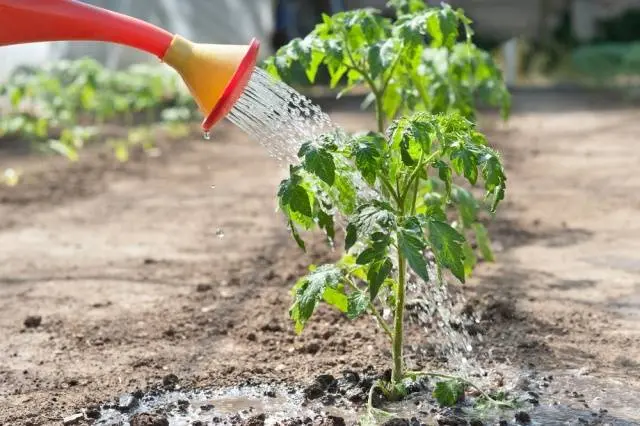
If the tomatoes are deficient in moisture, the picture will be like this:
- the ground around the tomatoes is dry and cracked;
- tomato stems are sluggish with low turgor;
- the leaves are lifeless, hanging like rags;
- all the leaves on the bushes can turn yellow at once.
Seeing such a situation on their site, gardeners often rush to help the tomatoes and fill them with plenty of water. This is not worth doing, especially if the tomatoes are in the fruit ripening stage. Due to the large amount of moisture, the tomatoes will crack – the crop will be spoiled.
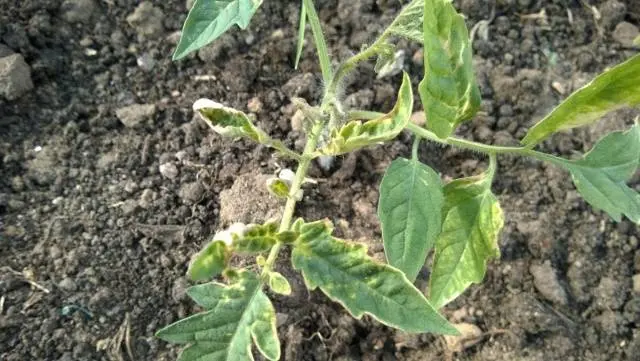
Tomato leaves turn yellow and when they do not have enough water. But in this case:
- the earth does not look dry, on the contrary, it may be silted or covered with moss;
- tomato stalks are elastic, easily broken;
- plants show signs of fungal infections.
You can prevent problems with yellowed leaves if you water the tomato seedlings correctly:
- Only in the morning or in the evening. Sunburn through water drops is also manifested by yellowing of the leaves.
- Use settled warm water.
- Avoid getting water on the leaves and stems of the tomato, so as not to provoke fungal infections.
- Pour water only under the root or install a drip irrigation system in the greenhouse.
- Water tomatoes rarely, but plentifully. The ideal schedule for watering tomatoes: twice a week.
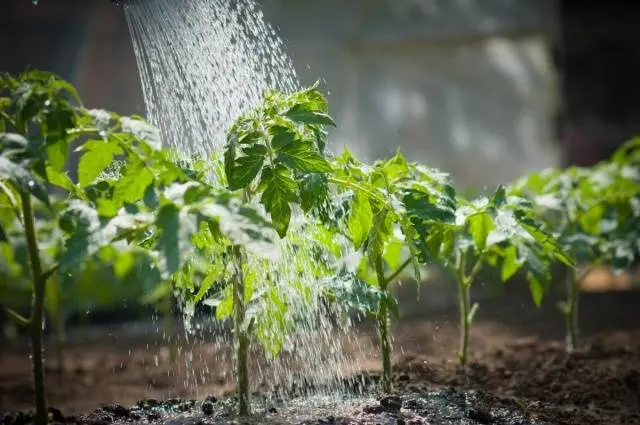
Power problems
Both a deficiency and an excess of trace elements in the soil can cause yellowing of the leaves in a tomato.. Therefore, it is very important to follow the fertilizer application schedule and constantly monitor the condition of the seedlings.
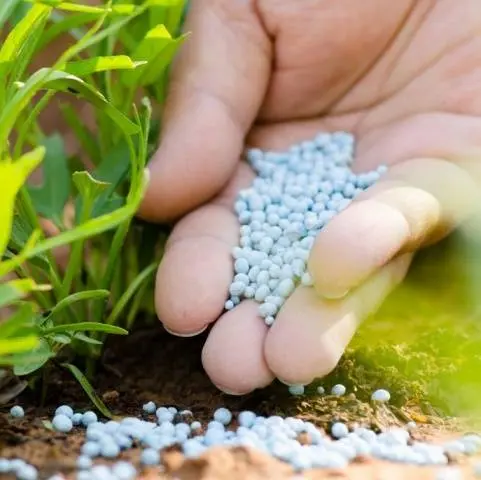
You can find out which substance is out of balance by the appearance of tomato leaves:
- In the greenhouse, the leaves turn yellow only in the lower part of the bush, the young leaves are green and look quite healthy, the plant itself is lethargic, undersized with small leaves, without flowers and ovaries – tomatoes lack nitrogen. Nitrophoska or other complexes containing nitrogen will help correct the situation. You can also fertilize tomatoes with slurry (1:10 with water), mullein. A distinctive feature of the leaves during the period of nitrogen starvation is that green veins are preserved.
- Discover about potassium deficiency it is possible by small bright dots that appear on all the leaves of the tomato bush. Over time, these spots grow until they merge into a large bright spot. Helping plants is easy: fertilize the earth with potassium-containing preparations.
- That tomatoes lack manganese, will tell the yellowing of the upper young leaves, gradually descending. Brown spots can occur against the background of excessive liming of the soil, as a result of which the amount of manganese is significantly reduced. A solution of slurry and wood ash or fresh mullein can help tomatoes.

- If there is not enough sulfur in the earth, tomato leaves not only turn yellow, but also become denser.
- Lack of copper manifested in the yellowing of only the lower old leaves.
- When tomatoes lack phosphorus, the tops of their leaves turn yellow and quickly die off. If the top of the leaf is dry, it is necessary to feed the tomatoes with superphosphate.

Diseases and infections
Probably, the most dangerous for tomatoes is infections, which are also quite often manifested by yellowing of the leaves. However, this is not the worst – the disease does not stop on the leaves, it destroys the entire plant: from the top to the roots.
To date, several dozen infections are known from which tomatoes can suffer. The most frequent and dangerous of them are fusarium and late blight, the first sign of which is the leaves that have turned yellow.
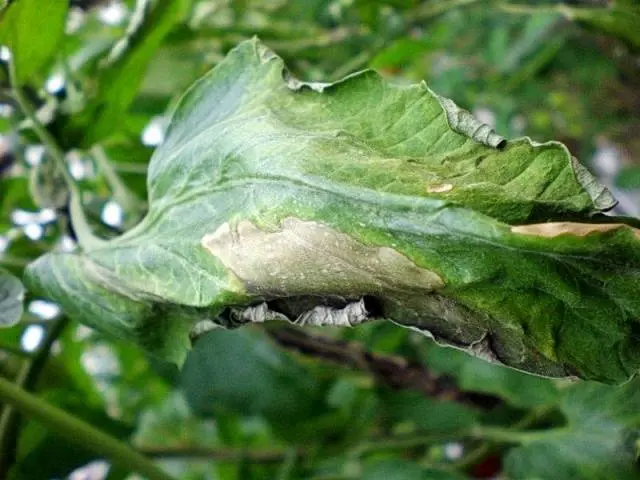
Fusarium wilt, for example, it appears suddenly and is manifested by a violation of the color and elasticity of tomato leaves. The spores of this fungal infection can be stored for several years in the soil, on tomato seeds, on garden tools, or in the structures of the greenhouse itself.
Fighting Fusarium wilt is very difficult, often this disease destroys the entire tomato crop in a matter of days. If the first signs of fusarium are noticed, it is necessary to treat the bushes with Trichodermin or Previkur.
Both young bushes and already adult plants with ripening fruits can get sick. First, the fungus damages the roots, which is why yellowing of the foliage can be observed. Then the disease spreads along the stem, gets into the fruits and ovaries – the whole bush eventually dies.
Fusarium wilt can be prevented by disinfecting the soil in the greenhouse, all structures, tools, and treating seeds before sowing seedlings.
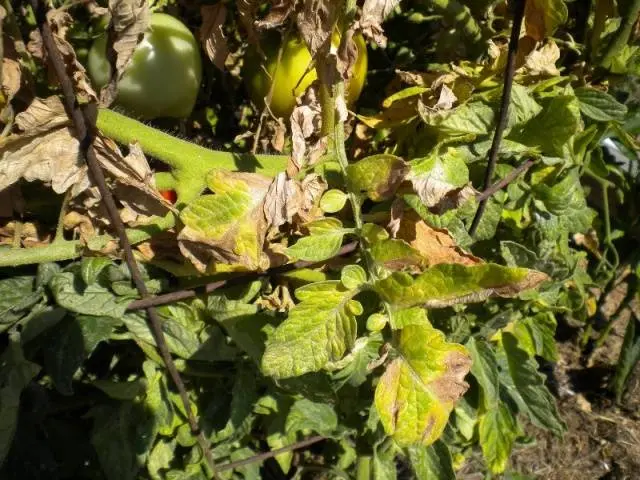
Fitoftoroz no less dangerous and very famous among gardeners. Its appearance is also facilitated by a violation of the microclimate, high humidity, heat, or, conversely, too low an air temperature.
If in most cases the lower leaves of the tomato turn yellow, then when the tomatoes are infected with phytophthora, the tops of the shoots and ovaries first of all acquire a brown tint and begin to dry out.
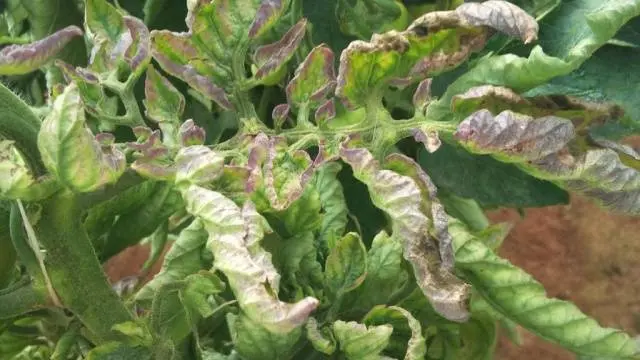
Drip irrigation and preventive treatment of plants with antifungal drugs will help prevent infection of tomatoes with late blight. When the bushes are already sick, you can treat them with Bordeaux mixture, but the treatment will have to be repeated regularly until harvest.
Results
Capricious tomatoes can have many problems, but almost all of them manifest themselves in the same way – yellowing of the leaves or the appearance of strange spots. To solve the problem, you need to find out what the plant does not like, which leads to its withering, and then take some measures.










